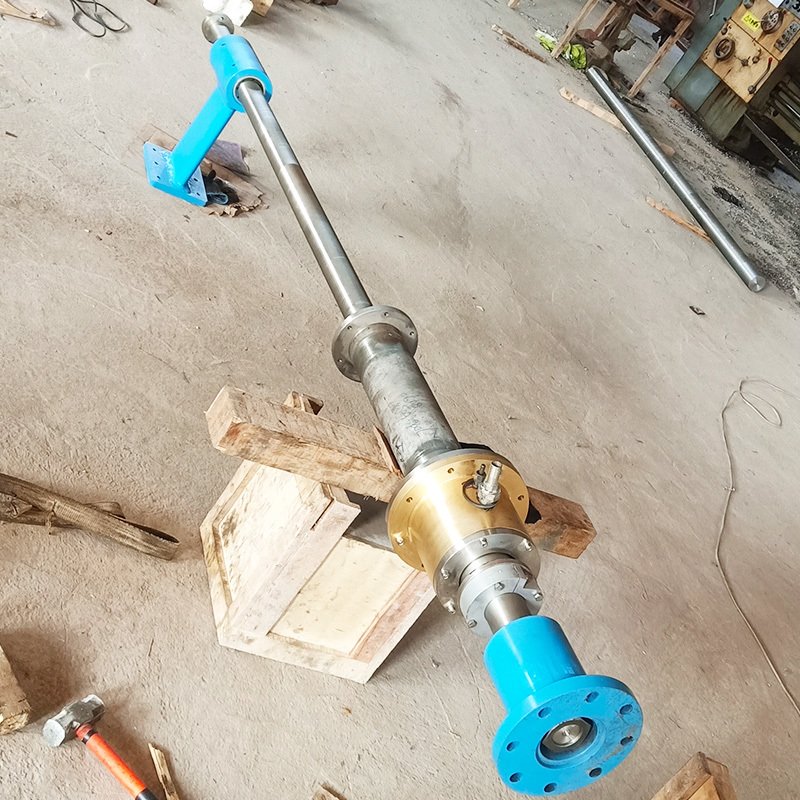Understanding the Importance of Propeller Shafts in Maritime Transport
Release Time:
May 20,2025
In the realm of maritime transport, the propeller shaft is a fundamental component that plays a vital role in converting engine power into thrust. It serves as a mechanical connection between the engine and the propeller, allowing the power generated by the engine to be transmitted effectively to propel the vessel forward. The efficiency and performance of a ship largely depend on the integrity an
In the realm of maritime transport, the propeller shaft is a fundamental component that plays a vital role in converting engine power into thrust. It serves as a mechanical connection between the engine and the propeller, allowing the power generated by the engine to be transmitted effectively to propel the vessel forward. The efficiency and performance of a ship largely depend on the integrity and design of its propeller shaft.
Typically constructed from robust materials such as steel or stainless steel, propeller shafts are designed to endure harsh marine environments. They must withstand significant forces and vibrations while maintaining precise alignment with the engine and propeller. The design often includes a taper at one end, which allows for a secure fit with the propeller, thereby reducing the risk of slippage during operation.
One of the key aspects of propeller shaft functionality is its ability to accommodate the rotational movement generated by the engine. As the engine turns the propeller shaft, it spins the propeller, creating thrust that moves the vessel through the water. The efficiency of this process can be influenced by several factors, including the diameter and pitch of the propeller, which are crucial for optimizing speed and fuel consumption.
Regular maintenance of the propeller shaft is essential for ensuring longevity and preventing mechanical failures. This includes routine inspections for wear and tear, alignment checks, and lubrication of bearings. Neglecting maintenance can lead to serious issues such as vibrations, reduced efficiency, or even catastrophic failures during operation, which can result in costly downtime and safety risks.
In addition to maintenance, the installation of an appropriate propeller shaft must consider various factors such as the type of vessel, its operational profile, and the specific conditions it will encounter. A well-chosen propeller shaft can enhance fuel efficiency and overall performance, making it a critical consideration during the design and operational planning of maritime vessels.
Moreover, advancements in technology are continually improving the design and efficiency of propeller shafts. Innovations such as composite materials and advanced engineering techniques are leading to lighter and stronger shafts that can boost performance while reducing energy consumption.
In conclusion, understanding the significance of propeller shafts is essential for anyone involved in maritime transport. They are not just mechanical components; they are integral to the performance, efficiency, and safety of marine vessels. By prioritizing the selection, installation, and maintenance of propeller shafts, operators can ensure smoother operations and better outcomes in their maritime endeavors.
Typically constructed from robust materials such as steel or stainless steel, propeller shafts are designed to endure harsh marine environments. They must withstand significant forces and vibrations while maintaining precise alignment with the engine and propeller. The design often includes a taper at one end, which allows for a secure fit with the propeller, thereby reducing the risk of slippage during operation.
One of the key aspects of propeller shaft functionality is its ability to accommodate the rotational movement generated by the engine. As the engine turns the propeller shaft, it spins the propeller, creating thrust that moves the vessel through the water. The efficiency of this process can be influenced by several factors, including the diameter and pitch of the propeller, which are crucial for optimizing speed and fuel consumption.
Regular maintenance of the propeller shaft is essential for ensuring longevity and preventing mechanical failures. This includes routine inspections for wear and tear, alignment checks, and lubrication of bearings. Neglecting maintenance can lead to serious issues such as vibrations, reduced efficiency, or even catastrophic failures during operation, which can result in costly downtime and safety risks.
In addition to maintenance, the installation of an appropriate propeller shaft must consider various factors such as the type of vessel, its operational profile, and the specific conditions it will encounter. A well-chosen propeller shaft can enhance fuel efficiency and overall performance, making it a critical consideration during the design and operational planning of maritime vessels.
Moreover, advancements in technology are continually improving the design and efficiency of propeller shafts. Innovations such as composite materials and advanced engineering techniques are leading to lighter and stronger shafts that can boost performance while reducing energy consumption.
In conclusion, understanding the significance of propeller shafts is essential for anyone involved in maritime transport. They are not just mechanical components; they are integral to the performance, efficiency, and safety of marine vessels. By prioritizing the selection, installation, and maintenance of propeller shafts, operators can ensure smoother operations and better outcomes in their maritime endeavors.
Keywords:
More information



